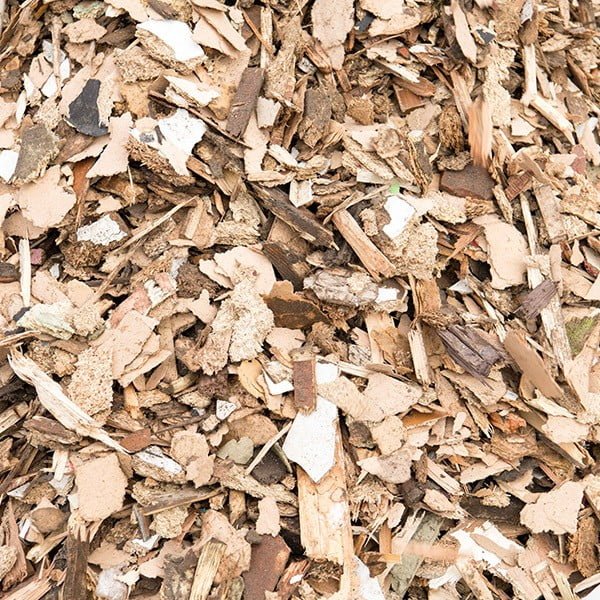Waste wood can be divided into three different categories, from grade A to grade C, that can all be used for briquetting. Grade A is the highest grade and contains the cleanest waste wood. Every additional grade category may contain similar raw materials from grade A plus additional materials ; the lower the grade, the more contaminants there are in the raw materials. There is also a fourth grade, - grade D - but this is considered hazardous waste and is thus not suitable for briquetting.
Grade C waste wood comes from a variety of different businesses that handle or manufacture wooden goods. It often consists of discarded furniture or other wooden fixtures and fittings. It may contain everything from MDF, OSB, and chipboard materials to construction and demolition waste, and it frequently consists of varnishes, glues, and other coatings as well. Other types of grade C wood is demolition wood which often contains an amount of contaminants, scrap pallets, cable drums and similar.

Even though grade C waste wood is one of the lowest grades when it comes to waste wood, there is no need to dispose of it instead of recycling it. Much grade C wood consists of the derivatives after all recyclable wood has been recovered. However, there is no need to send grade C wood to the landfill. A much more sustainable and profitable solution is to use your waste wood to make valuable fuel for industrial boilers in your own or surrounding production plants.
By converting your grade C waste wood, you will upgrade your waste from landfill to fuel briquettes with a wood briquette press. This will both save you transportation as well as landfill costs as you no longer need to store or dispose of your grade C waste wood. Roughly speaking, this means that when using one of our wood briquette presses for processing your grade C waste wood, you can transform your waste into a considerable profit.
There are not many simple and profitable alternatives to briquetting when it comes to converting or recycling grade C waste wood. Using briquetting for grade C waste wood makes it possible to turn fines from shredding into valuable fuel. C.F. Nielsen offers solutions that process 5.000 tons of waste wood or more per year.

At C.F. Nielsen, we make sure to guide you when selecting the correct solutions and wood briquette press machine that is best suited for processing and recycling the grade C waste wood from your production plant. All of our wood briquette presses are installed with the latest technology and adapted to your individual needs for a unique solution.
We do, for example, offer the BP5510, which is the mechanical press that is most suitable for grade C wood. It produces briquettes with a diameter of 75 mm., and the capacity is ensured through the double infeed system and control system. The press is robust, and we have a long reference list of lines for industrial fuel.
Using grade C as raw material creates very high wear, compared to other raw materials from, for example, grade A or B. Therefore, we have developed unique wear parts, such as:
These parts are either made from special steel, have undergone a specialized hardening process, or treated with a special surface treatment.
Furthermore, we have developed a unique briquetting system that can operate with raw materials with high moisture content. This will reduce the drying costs that would otherwise be necessary before briquetting grade C waste wood. The large capacities of the briquette press, the high degree of automatization, as well as the engineered specialized solutions, combined with our advanced briquetting control system, secure low waste, low operating costs, and high up-time, making us the lowest-cost producer.

Esben M. Vestergaard
Regional Sales Manager
Do you want us to contact you?
Please fill out the form and we will get back to you.